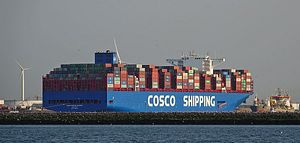Passions in India are at a palpable high on account of the recent terror attack orchestrated by the Jaish-e-Mohammed (JeM), in which over 40 security personnel were killed in Pulwama, Kashmir. China, which has repeatedly blocked bids to designate Pakistan-based JeM leader Masood Azhar as a global terrorist, is once again attracting much of the Indian public’s ire. It has become somewhat routine for Indian citizens across the country to call for a boycott of Chinese imports in order to register their displeasure with their Asian neighbor. The Confederation of All India Traders led the charge this time, even going so far as to recommend that a 300 percent tariff be placed on Chinese goods to discourage their consumption. Likewise, Indian netizens are quick to issue the clarion call through a flurry of WhatsApp forwards made to family and friends. For all the excitement that the subject generates, however, it is hardly rational and warrants an unwrapping for the public interest.
First, World Trade Organization (WTO) regulations prohibit states from orchestrating broad-gauged import restrictions. As such, it would fall largely to civil society to organize these bans, which given its fragmented nature, would involve sizable opportunity and transaction costs. Even so, a boycott of Chinese imports would not justifiable even if logistical issues could be resolved.
The threat of a boycott would not be effective in altering China’s behavior since it could not generate leverage for India. This is because trade with India is far less economically important to China, which has deliberately, and successfully, diversified its trade by engaging with a large number of partners. Some bilateral trade data will illustrate this. Exports to India constituted only 3 percent of the Chinese total in 2017. China’s economy is also roughly five times as large as India’s, meaning that Chinese exports to India are an even smaller proportion of the country’s total economic activity than the share in total exports can convey.
It is sometimes argued that India possesses some economic leverage over China since its population is a large consumer of Chinese mobile phones, a high value-added commodity that is integral to its technological ambitions. Indeed, this is China’s largest export to India and stood at $8.9 billion in 2018. It is also the most visible element in the bilateral trade relationship. Indian consumers are starkly aware that Chinese brands have out-competed others and calls to boycott these purchases are increasingly common. A more holistic view of the data, however, indicates that China’s exports of telephones (including mobiles) to India accounted for only 3.7 percent of its total 2018 foreign sales. While India is certainly a market where Chinese phone manufacturers plan to expand, India’s monopsony power in this regard is often overstated. Quite to the contrary, it is India that is exceedingly dependent on Chinese companies. Out of India’s total imports of telephones, 71.2 percent were procured from China as per 2017 data. With respect to total consumption of mobile phones, Chinese companies had captured at least 44 percent of the total market share in the last quarter of 2018. The asymmetry is clearly in China’s favor.
To be sure, bilateral trade data reveals certain commodities wherein India theoretically enjoys monopsony power over Chinese producers — pharmaceuticals, fertilizers and transistors are the most prominent. These are not only sold to India in large amounts in absolute terms, but the Indian share in China’s total exports in these sectors is also significant (20, 21 and 13 percent respectively in 2017). Most other Chinese exports to India are either not big-ticket items or could be sold to alternative buyers with relative ease. However, while boycotting these would certainly hurt Chinese exporters, the shock to Indian consumers and producers would be larger.
For instance, boycotting transistors is a complete nonstarter. China accounted for 81.9 percent of India’s transistor imports in 2017. Importantly, transistors are an input to almost all electronic goods and machinery. Switching cheap Chinese transistors for expensive alternatives will result in price increases in a broad swath of products that the Indian consumer will ultimately have to pay. These imports also contain embodied technologies, particularly semiconductors, that India would be loath to lose access to. China also accounts for a large proportion of India’s fertilizer and pharmaceutical imports, although one could argue that strong domestic production serves to mitigate the dependence. Still, this leaves only two sectors wherein an Indian boycott could inflict significant pain on Chinese exporters without inexorably imposing costs on Indian consumers. Additionally, a boycott will likely invite retaliation, in either tariff or non-tariff form, that will presumably hurt Indian exports to China.
Ultimately, a boycott of Chinese imports is neither feasible, nor effective, nor efficient. Expecting China to strain its relationship with Pakistan, an all-weather partner into which it has poured billions of dollars, with such little leverage is folly even if the concomitant domestic costs were acceptable. Indian citizens could better aid their state’s foreign policy if they optimized their behavior to maximize consumer and producer surpluses, thus bolstering the nation’s economic heft, which forms the bedrock of national power.
Uday Khanapurkar is a Research Assistant at the Institute of Chinese Studies, Delhi.

































